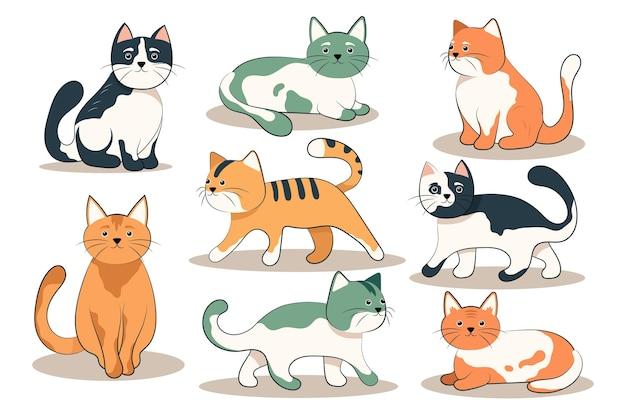Have you ever wondered why we behave the way we do? Our actions and choices are influenced by a multitude of factors, one of which is learned behavior. From the moment we are born, we begin to absorb information from our surroundings and acquire new skills through experience. In this blog post, we will explore the intriguing world of learned behavior and delve into its four distinct types.
But before we dive in, let’s take a step back and clarify what we mean by “learned behavior.” Simply put, learned behavior refers to actions and responses that are acquired through observation, practice, and experience. Unlike innate behaviors, which are instinctive and present in organisms from birth, learned behaviors are developed over time. They are highly flexible and can be altered or modified in response to different situations.
Now that we have a clear understanding of what learned behavior entails, let’s explore the four types in detail. But first, let’s quickly touch upon the advantages of innate behaviors and familiarize ourselves with a few examples of both innate and learned behaviors. So, gather your curiosity and let’s embark on this fascinating journey through the world of learned behavior!

The Fascinating World of Learned Behavior
Have you ever wondered why you find yourself automatically reaching for that enticing piece of chocolate cake, even when you know you should be sticking to your diet? Well, my friend, that’s all thanks to learned behavior! In this subsection, we’ll dive deep into the captivating realm of learned behavior and explore its four intriguing types.
Classical Conditioning: When Pavlov’s Dog Rings a Bell
Ah, classical conditioning, the grandfather of all learned behaviors! This type of learning involves associating a neutral stimulus with a response through repeated pairings. Remember Pavlov and his famous dog? Every time the pup saw food, it started salivating. But what happened when Pavlov rang a bell before presenting the food? You guessed it! The dog began drooling at the sound of the bell alone, even without any food in sight. Talk about a conditioned response!
Operant Conditioning: Training on the Behavioral Treadmill
Welcome to the world of operant conditioning, where behavior is shaped through rewards and punishments. Imagine you have a misbehaving pet parrot named Polly. To teach Polly good manners, you decide to reward her with a treat every time she speaks politely and refrain from giving her attention when she squawks like a maniac. Before you know it, Polly has become the most well-mannered parrot in town! Operant conditioning is all about consequences shaping behavior, just like your trusty treadmill shaping those glutes.
Observational Learning: Monkey See, Monkey Do
Now, let’s talk about the learning method of the cool kids on the block: observational learning. This type of learning occurs when we acquire new behaviors by simply watching others. Think back to grade school and that time you watched your classmates effortlessly tie their shoelaces. After careful observation and a few practice sessions, you finally conquered the art of knotting your laces. That, my friend, is observational learning in action. So, while it may not make you a literal monkey, you can sure learn a lot from observing their clever ways.
Habituation: Boringness Can Be a Good Thing
Who says being boring is a bad thing? Certainly not habituation! This type of learned behavior involves getting used to a repeated stimulus, resulting in a decreased response over time. Remember the first time you heard the loud ticking of a clock in a quiet room? It was maddening, wasn’t it? But as the days turned into weeks, that ticking became nothing more than background noise. Your brain habituated to the sound and gradually ignored it. So, the next time your neighbor throws a wild party, just remember that habituation might save your sanity.
Now that we’ve explored the four types of learned behavior, you’re armed with a deeper understanding of how we acquire new habits, responses, and skills. Whether it’s Pavlov’s salivating dog, Polly the well-mannered parrot, the shoe-tying classmate, or the ticking clock, learned behavior plays a fascinating role in shaping our lives. So keep observing, keep conditioning, and keep learning, my curious friend!

FAQ: Common Questions About Learned Behavior
What are the advantages of innate behavior
Innate behavior has its perks! It’s like having built-in autopilot mode. Some advantages of innate behavior include:
-
Survival Skills – Innate behaviors like feeding, mating, and finding shelter are essential for an organism’s survival.
-
Efficiency – Innate behaviors are pre-programmed, so they require little to no conscious thought. They save time and energy!
-
Consistency – Innate behaviors are consistent across individuals of the same species, ensuring uniformity and species success.
What are the two types of innate behaviors
Ah, the marvelous world of innate behaviors! There are two main types that are worth mentioning:
-
Fixed Action Patterns (FAPs) – These are innate behaviors that are triggered by a specific stimulus and carried out to completion. Think of a male peacock displaying its magnificent tail feathers to attract a mate.
-
Instinctive Reflexes – These are rapid, automatic responses to certain stimuli. When a fly lands on your arm, your instinctive reflex kicks in, and suddenly, you’re swatting it away!
What are traits and behaviors
Traits and behaviors go hand in hand, like peanut butter and jelly! Here’s the lowdown:
-
Traits are innate characteristics or qualities that define an organism. These can be physical attributes, like eye color, or behavioral tendencies, like being introverted or extroverted.
-
Behaviors are actions or responses displayed by an organism in different situations. They can be innate or learned, influencing how an individual interacts with the world around them.
What are some examples of learned behaviors in humans
Humans are master learners! Here are a few examples of the fascinating learned behaviors we exhibit:
-
Language Acquisition – We don’t pop out of the womb speaking fluently; we learn to communicate through listening, mimicking, and practice.
-
Driving – Unless you’re a prodigy, you didn’t hop behind the wheel and start zooming like a race car driver. You had to learn the rules, develop the skills, and conquer that parallel parking challenge.
-
Cooking – Remember the days of burning toast? Over time, with trial and error, we learn to whip up culinary masterpieces that don’t set off the smoke alarm.
What are examples of learned traits
Learned traits are like hidden treasures we acquire through experience. Here are a few shining examples:
-
Empathy – This isn’t something we’re born with; it’s a learned trait that enables us to understand and share the feelings of others.
-
Patience – Waiting in line without tapping your foot impatiently? That’s a learned trait that helps you maintain your sanity in this fast-paced world.
-
Resilience – Life throws challenges our way, and it’s through experience that we learn to bounce back, adapt, and thrive.
What are the most common personality traits
Ah, personality traits, they make us who we are! While we’re all unique, here are some of the most common personality traits humans possess:
-
Extroversion – These social butterflies thrive in the company of others. They’re the life of the party and always ready for a good time.
-
Introversion – Introverts prefer quieter settings, finding solace and energy in solitude. They’re great listeners and often have rich inner lives.
-
Conscientiousness – These folks are diligent, detail-oriented individuals who thrive on organization and self-discipline. They’re the ones who color-code their sock drawer!
-
Openness – Those with high openness are curious and imaginative. They embrace new experiences, ideas, and perspectives with open arms (and minds).
What are the four innate characteristics
Innate characteristics are like our genetic superpowers, defining us from the get-go. Here are the four main ones:
-
Genetic Makeup – We inherit DNA from our parents, setting the stage for our unique physical and behavioral attributes. Thanks, Mom and Dad!
-
Instincts – From an instinctive fear of heights to the irresistible urge to crack open a pistachio, these innate impulses are hardwired into our biology.
-
Developmental Milestones – As we grow, there are predictable stages and patterns of development we naturally pass through. Think of smiling, crawling, and walking.
-
Reflexes – Ever notice that knee-jerk reaction when a doctor taps your knee with that rubber hammer thing? That’s an innate reflex, a response programmed into our nervous system.
What are the four types of learned behavior
Drum roll, please! Here are the four fascinating types of learned behavior:
-
Imprinting – No, we’re not talking about t-shirts or mugs here. Imprinting is when an organism forms a bond and learns from another individual or object early in life. Just like a baby bird recognizing its mother.
-
Associative Learning – This type of learning occurs when we link or associate specific stimuli with certain outcomes. Remember Pavlov’s dogs? They learned to associate the sound of a bell with food and started drooling on cue.
-
Observational Learning – We’re all a bunch of copycats! Observational learning happens when we watch and mimic the behaviors of others. It’s how we learn to tie shoelaces or play air guitar.
-
Operant Conditioning – This is like behavioral magic. We learn through consequences. Positive consequences, like rewards, strengthen a behavior, while negative consequences, like a slap on the wrist (metaphorically speaking, of course), discourage it.
And there you have it—four types of learned behavior to expand your understanding of the wonders of the human brain!
Now that you’re armed with this newfound knowledge, go forth and impress your friends with your fancy FAQ lingo. Happy learning!
